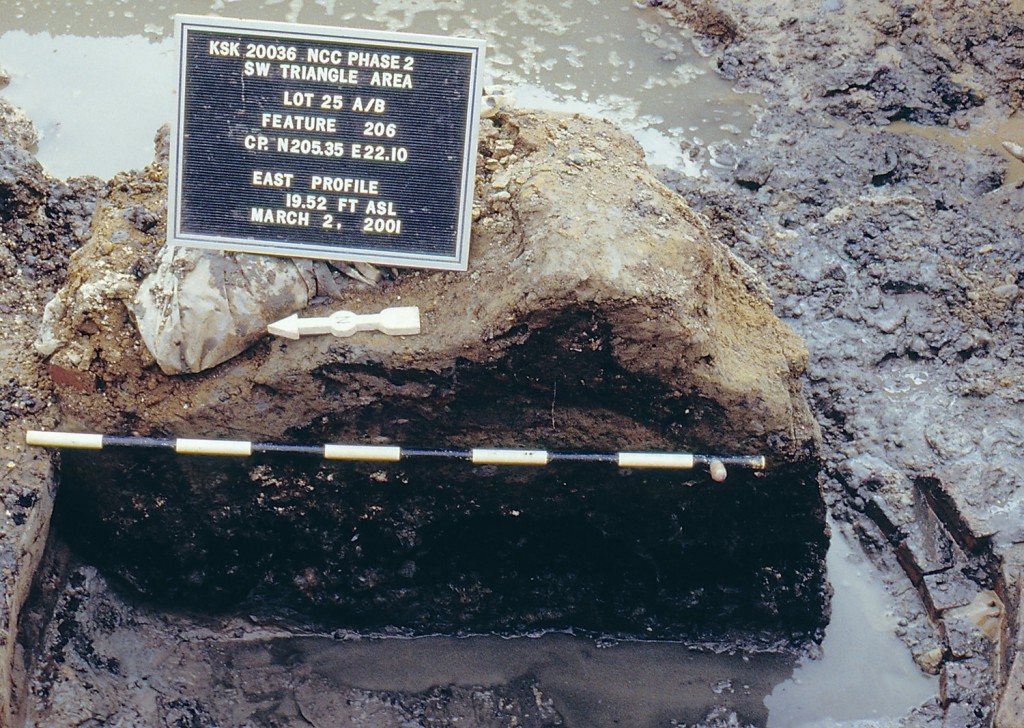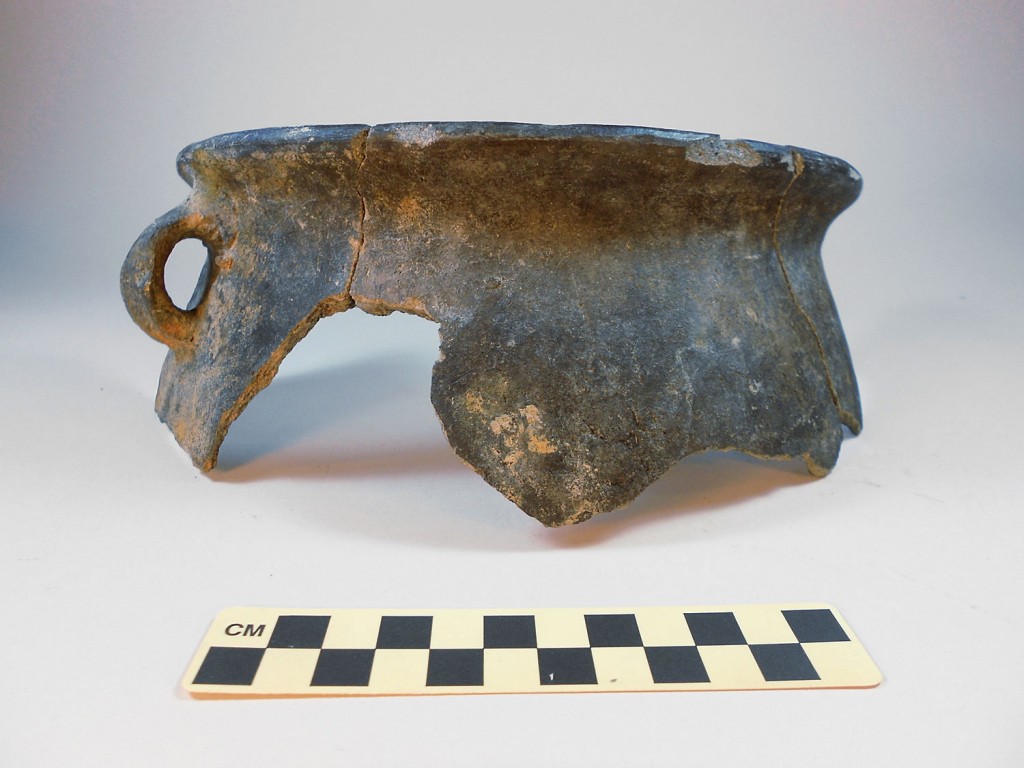Artifact of the Month – February 2015
To Artifact of the Month Index
To PAF Home
COLONOWARE IN PHILADELPHIA
These pot fragments were the first pieces of colonoware pottery discovered in Philadelphia. Colonoware is a pottery tradition associated with early Africans and African Americans living along the Eastern Seaboard of North America and in the Caribbean. These fragments were found in 2001, during archaeological excavations undertaken during the building of the National Constitution Center in Independence National Historical Park.
In early 2001, archaeologists working at the site where the National Constitution Center [NCC] now stands, between Arch and Race Streets and Fifth and Sixth Streets in Independence National Historical Park, made an unusual find. At the bottom of a privy pit (outhouse), amid a layer of other household trash deposited during the mid to late 18th Century, were fragments of a simple, nondescript, cooking pot.
The pot is of a type that archaeologist call colonoware. It was first identified in Virginia, in 1962, by Ivor Noel Hume, who had conducted pioneering excavations in Colonial Williamsburg. Noel Hume initially believed that the pottery was made by Native Americans during the colonial period and that it was used by enslaved Africans. Subsequently, much more of the simple, hand built, ceramic was found through out the Southeast and, later, in the Caribbean. These additional finds established that colonware was produced primarily by Africans and African Americans.
The colonoware pot fragments identified in 2001, and other fragments recovered nearby from the NCC Site excavations, form an extraordinary find because they are the first examples of colonoware found in Philadelphia. Initially, archaeologists thought that the production and use of colonoware was limited to the Southeastern region of North America, but finds like these at the NCC Site have forced researchers to revise that view.

In 2001, fragments of a colonoware pot were found in a deposit of household trash at the bottom of this privy pit. Photo courtesy of Independence National Historical Park.
How did these simple pots come to be present in Philadelphia? Were they carried here by free and enslaved African Americans who came to the city, either of their own accord or forcibly relocated? Were colono pots an occasional cargo item on the ships that plied Philadelphia’s busy harbor? Is it possible that colonoware was being made in the city by its enslaved and free black residents? And how, and by whom, was this pottery used?
Recently, archaeologists working on projects associated with the reconstruction of Interstate 95 within the city of Philadelphia have made additional finds of colonoware. Together with the earlier discoveries from Independence Park, these colonoware fragments will help us better understand this fascinating pottery tradition and what it can tell us about those who lived in 18th and early 19th Century Philadelphia.
Information for this Artifact of the Month was contributed by Jed Levin of Independence National Historical Park.
To Artifact of the Month Index
To PAF Home
by admin
